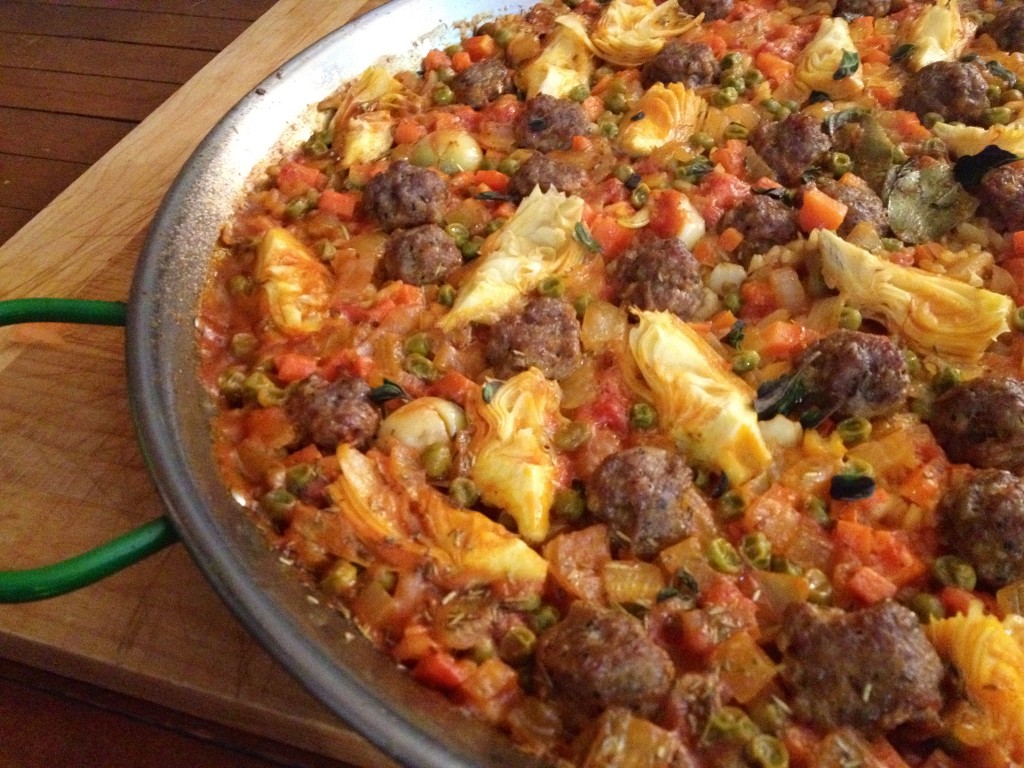*The following was originally published in the Fairbanks Daily News Miner.
I’m always trying to recreate a specific piece of my lost youth: a paella I had while living with a wonderful family in Almeria, Spain on the Mediterranean coast. I honestly can’t remember the details of any other meal I’d eaten until that paella. And then, like a movie that begins only after a long string of unremarkable previews, I was thrown into a Technicolor action-flick starring me, the Adventurous Eater. My culinary awakening had arrived.
You may recall specific dishes from your own childhood, but there is probably one specific meal from your adolescence or young adult years that made you sit up and take notice. It was probably a cuisine unfamiliar to your palate at the time, and my guess is that you remember every detail — the way it smelled and tasted and looked, who you were with at the time and a host of other details that overshadow everything you ever ate up to that point. Like me, you’ve also probably tried to recreate this meal in vain. I know in my heart that it’s a futile endeavor. I know I’ll never be fifteen again, with sea-salt in my hair and sunburned shoulders sitting at the table of an ancient tía who feeds me bowl after bowl of paella until I have no choice but to lie down and nap on the cot she sets up in the nook under the stairs — but try I must.
If you’re unfamiliar with Spanish paella, it’s a national dish but varies widely depending on the geographical location of the cook. Most Spaniards and paella aficionados are so passionate about the details that even the Wikipedia entry for “paella” is currently under editorial lock down until disputes about the history, the ingredients and even the origins of the word can be resolved. One thing is consistent however: the shape of the pan in which it’s cooked, which should be wide, shallow, and flat with handles on either side. This shape is important because it helps create a good sofrito and socarrat, two things any paella must have.
The sofrito is a mixture of diced garlic, onions and tomatoes sautéed in olive oil. The shallow width of the pan gives the vegetables enough room to caramelize lightly before adding the rice, broth and meat. Spices are usually added at the end of the sofrito. Smoked paprika, cumin, pepper and green herbs like rosemary or thyme are common.
Once the sofrito has reduced to the consistency of a thin jam, the rice and broth are added. A starchy, short-grain should be used since the starchiness of the rice helps create the socarrat — that delicious, caramelized and slightly crunchy layer of rice that develops on the bottom of the pan in the final stage of cooking.
The broth (often chicken) is usually combined with saffron and bay leaf. Although saffron is expensive, it doesn’t take much to add flavor to the entire dish and it seems to be a fairly universal component of good paella. The rice should be allowed to settle to the bottom before adding the meat and additional vegetables.
Once the sofrito, broth, and rice begin to simmer, various meats are added. In coastal regions seafood is used, whereas inland cooks use things like rabbit and snails. If the area produces a good sausage, then some of that goes in as well.
Seasonal vegetables are arranged on top along with the meat, and the dish is allowed to simmer until the meat is done and the rice has absorbed the broth and formed the socarrat. Finally, Spaniards gather their friends around the pan, give each a spoon and let everyone eat their fill, each being careful not to encroach on the wedge of his or her neighbor.
Paella can be a complicated dish, so I’ll let you do your own research for a detailed recipe. A highly modified, Americanized version that uses the basic paella philosophy is fairly simple, just don’t call it “paella.” Get yourself a paella pan (many are less than $50) and caramelize some finely diced vegetables in olive oil. Then add one or two cups of a short-grain rice along with enough hot broth to fully cook the rice. Let the rice sink to the bottom and once everything begins to simmer, arrange one or two different kinds of meat and a few other vegetables on top.
Last night I made my own version with sausage and artichokes. I cooked everything on the stovetop until the last ingredients were added then let it finish in a 400 degree oven. I don’t know that anyone experienced a culinary awakening, but there was nothing left but the spoons when we were done.





Pingback: Sofrito – a concentration of summer’s flavor « Frugal Hausfrau's Blog